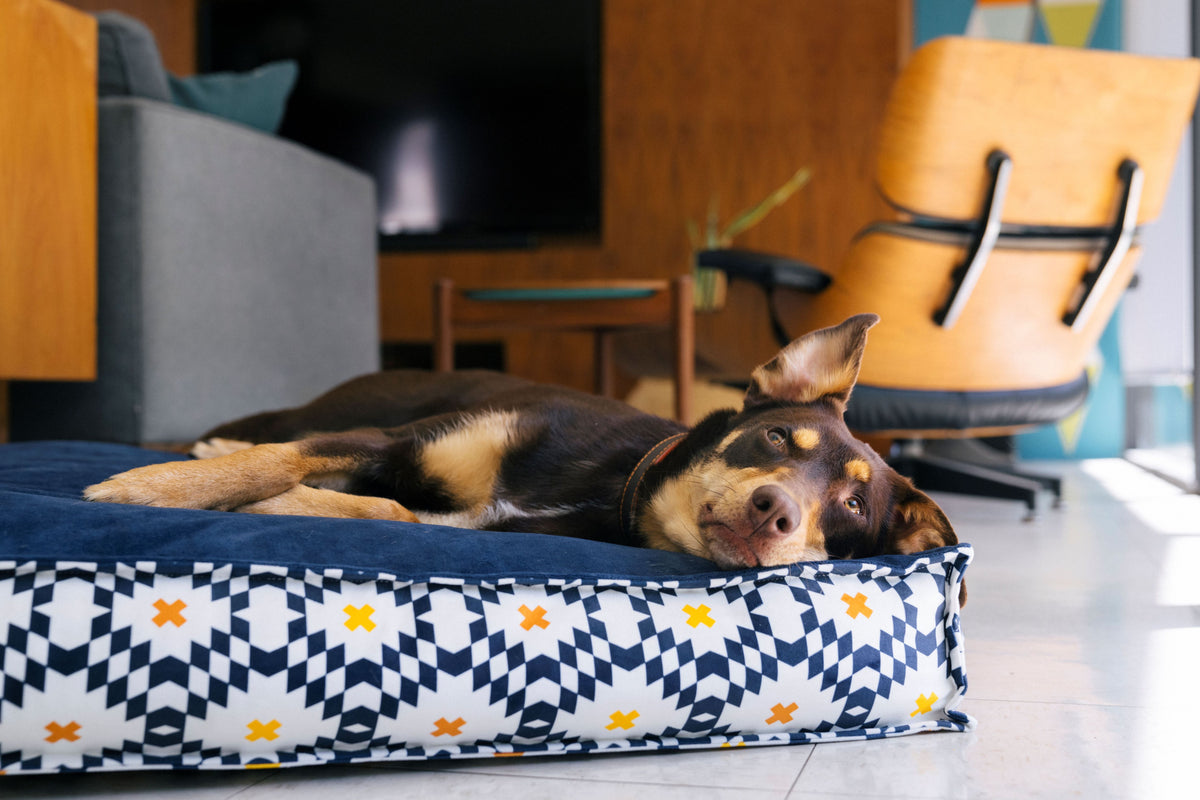Like humans, dogs inherited a fear mechanism from their ancestors to protect themselves from danger in the wild. Unfortunately, when our domesticated friends exhibit fear, it can pose a danger to themselves and others.
Understanding the common fears and phobias dogs can develop is the first step in relieving their stress and creating a safer and more comfortable home alongside our furry friends.
Let’s go over 10 of the most common fears your dog might be experiencing and how you can help.
Fear vs. Phobia
The most common mistake pet parents make is treating a fear or a phobia like a behavioral problem. Fears, especially phobias, are caused by an emotional response rather than a behavioral issue. When we respond to fearful behavior with anger, we reinforce the idea that the trigger is negative.
Fears often develop from a lack of early exposure. Slowly exposing your puppy to new things can help them have positive experiences later. If your dog already has fears, slow exposure with positive reinforcement can help them cope.
Giving your pet their favorite treat, toy, or praise when confronted with a trigger can help over time. It is important to get the timing right by rewarding your dog the moment they come in contact with the issue.
Phobias are more complex and result from previous experience. It can take a single bad experience for a dog to develop a phobia. They may never resolve on their own and will likely get worse if left untreated. However, a phobia can be managed and may even be resolved with proper care.
How to Tell if Your Dog Is Scared
Dogs express fear in a variety of ways. They may physically shake, tuck their tail between their legs, pace, bark, hide, whine, or growl. Paying attention to your dog’s physical signs of anxiety can help you prepare.
If you understand their cues, you can avoid negative situations. Timing and planning can do wonders.
1. Situational Phobias
The most common situational phobia is separation anxiety.
One way to help your pet cope with separation anxiety is to leave them with a fun treat. For example, a puzzle, a KONG stuffed with peanut butter, or collagen chews can keep them occupied while you are away.
Another tip is not to make a big deal when you leave and return by yelling goodbye or hello. Keep it low-key and uneventful.
2. Fear of the Veterinarian
Many of us don’t enjoy doctor visits. This is true for our pets as well. Giving your canine friend a special reward while at the vet or taking them somewhere fun before or after can help the experience.
3. Fear of New People
For many dogs, fear of new people occurs when they are not exposed to other humans often. Taking them out more, allowing them to meet more people, and reinforcing the greetings with treats and praise can help.
Keeping a reactive dog on a leash and introducing them slowly is important for everyone’s safety. You can also use a vest with a warning label that tells people they are anxious and need space.
4. Fear of Children
When dogs fear children, it can cause an unsafe environment. Like fear of new people, this may be caused by unfamiliarity. You want to be more careful around children, as their behaviors and movements are more unpredictable.
Introduce them very slowly and from a distance. You should also tell children to be cautious and move slowly for their protection.
5. Fear of Car Rides
Fear of car rides can manifest in many ways. The dog may have had a bad experience, get car sickness, or associate cars with vet visits or other negative environments.
If they don’t get car sick, taking them on frequent car rides to places they enjoy can help them get over their anxiety.
6. Fear of Loud Noises
Fireworks are a common loud noise dogs fear. Luckily, we know the popular holidays for fireworks. You can plan ahead by either keeping your pet in the quietest and most secure place in the house or by giving them calming treats or other veterinarian-recommended medications.
7. Fear of Storms
The most important thing to do for a dog fearful of storms is to pay attention to the weather so you can prepare.
Set up a safe den for your dog, or try covering the thunder with other noises like pleasant music. There are also body wraps and calming treats. If your veterinarian recommends medication, you must administer it before the thunder starts.
8. Fear of Objects
Vacuums are one of the most common objects a dog fears, as they’re loud and move around unexpectedly.
When you plan to vacuum or use a particular object, put your dog in a different room with their favorite toy or chew. Never chase a dog with an object that makes them uncomfortable, as this can make them more reactive.
9. Fear of Other Dogs
When a dog is reactive to other dogs, taking them out can be challenging. Repeated exposure to dogs who are comfortable with other canine friends can help them learn positive behavior.
Always go slow when introducing your dog to other pets. Just like humans, it can take a while for them to be comfortable around someone new.
Some dogs have had negative experiences with other dogs in the past. When this is the case, it may take longer to address the situation. Occasionally, a dog may never completely heal and are better suited in a one-dog household.
10. Fear of Stairs and Hard Surfaces
Dogs fear things they don’t understand. If your pet fears stairs or unfamiliar surfaces such as slippery floors, it’s normal.
They will most likely overcome the fear when exposed over time and with positive reinforcement. You can place rugs on slippery surfaces so they feel more comfortable.
Training
Research indicates the average dog’s cognitive capacity is close to a 2-year-old human. When training your dog, think about how you might distract a toddler from something they dislike.
While fear and phobias are emotional responses, training can help your dog by giving them the means to communicate better. Training can help build a dog’s confidence and help us understand cues.
Basic obedience training can redirect undesirable behavior. For example, if you’re on a walk and a stranger is approaching, you can command your dog to sit and focus on you.
Therapies
Occasionally, managing your dog’s fear can’t be handled with environmental and behavioral adjustments alone. If this is the case, contact your vet. There are a lot of affordable options, such as antianxiety medications or calming sprays, that can help.
Conclusion
Just like humans, dogs have individual personalities and issues to address. As their pet parents, we must be there for them and help our canine friends through difficult times.







